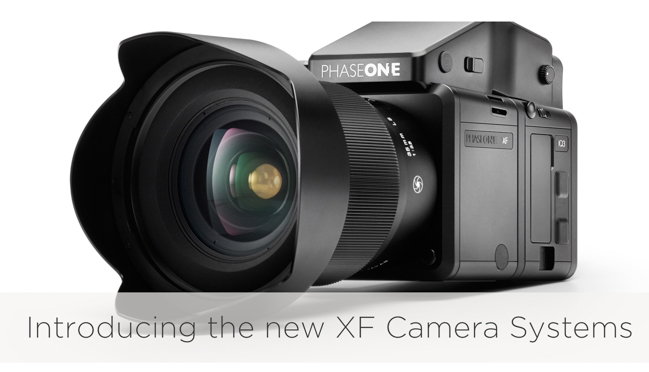

When we consider the economic gap between the have littles and have way mores, the average photographer falls under the former. For those of the have way, way more persuasion, today is a good day. Phase One has released a much anticipated new camera system called the XF, which is accompanied by the new IQ3 series of digital backs, new 35mm and 120mm leaf shutter lenses, and an updated version of Capture One. That’s a big day of releases for any manufacturer (even Nikon, who likes to put out 63 variants of essentially the same camera), but it’s tremendous for a company like Phase One.
The line has been described as, “robust, aerial-grade mechanics, advanced electronics, a new autofocus platform, new modularity options, new software and customizable touch controls,” and President and CEO Henrik Håkonsson wagers it’s like a, “Stradivarius in the hands of an expert.” High praise, but then again from what we can tell so far, deserved.
The system on a whole has needed, or warranted, an upgrade for quite some time now in various areas, and this release suggests there have been upgrades system-wide to the hardware, software, user interface, and general usability. In terms of image quality, medium format digital cameras have much more than a razor’s edge on their smaller DSLR counterparts, but have often failed to provide some of the benefits of a DSLR such as good high ISO ability and great autofocus. It’s clear that Phase One is trying to change this with the new system, and it’s a timely refresh when you’ve got cameras like the Canon 5DS clawing at the heels of medium format resolution.
While having the new software is brilliant, just like on a computer, there needs to be upgraded hardware to run it, and run it on. The new body has new sensor systems and processors along with modular viewfinders, including a waist level option, three physical dials, six buttons, and a capacitive retina touchscreen to render high-quality previews.
IQ3 Backs
To go along with the body, there are the 3 variants in sensors in the IQ3: either a 50MP, 60MP, or a whopping 80MP Phase One exclusive sensor that allows for 60 minute exposures, and also allows for H and V-mount use, unlike the smaller two. The larger two variants are CCD-based with the 50 a CMOS. These new backs are all Wi-Fi enabled, able to deliver faster data rates and power sharing between the system’s two batteries. And, of course, when you’re one of the best, you team up with the best, which Phase One has done by strengthening their alliance with Profoto. They’ve included a integrated wireless Profoto flash trigger. Nice touch.
You can also control the camera, should you wish to, via a tethered computer or mobile device using the Capture Pilot iOS app. Oh did I forget to mention, they claim to have 14 stop dynamic range? Grasp that if you can.
Upgraded AF
But the feature that’s sure to get most attention is the new Autofocus system called the HAP-1, ‘Honeybee Autofocus Platform’. Using a new white spectrum focus assist light in place of the infrared of models past, along with a 1MP CMOS sensor with a custom floating processor, this AF system has spot, average and even hyperlocal point focusing, the latter allows for a custom hyperfocal point to be set for each lens and then can be AF pointed to that whenever desired. Also, the HAP-1 platform’s ability to perform light metering means the waist-level shooter can measure exposures.
New Lenses & Capture One
The two new 120mm LS f/4 Macro and 35mm LS f/3.5 leaf shutter lenses are both marked as able to resolve higher than 100MP, which leads one to think that the next iteration of this camera or digital back system will actually be able to take advantage of this. Actually, the 5-year warranty, along with the lenses’ abilities surpassing the current IQ3 shows that Phase One aims to meet the needs of today and many tomorrows to come.
And last, but certainly not least, is the update to Capture One which sees full support for the new IQ3 backs, along with initial support for the Canon 5DS and 5DS R, and support for the Nikon 28mm f/1.8G and 60mm f/2.8G. Furthermore, the standard bug fixes and platform stability improvements are there, as well as high-functioning tethering for Apple computers, new grid modes, and overall faster tethering.
How do you put a price on such brilliant camera tech? Well, easily, it seems. If you’ve read all this and decide your life is incomplete without everything on this page, it may be a good time to start thinking about renting the wife and mortgaging the children because at the lowest end you can expect to pay about $41,000 USD for the XF IQ3 50MP, $42,000 for the 60MP, and $49,000 for the 80MP. And the lenses? Well, they each ring in at $6,500.
So if you are one of the few photogs whose bank balance is bigger than their account number, I say get one. Get it all.
Source: Phase One











Get Connected!